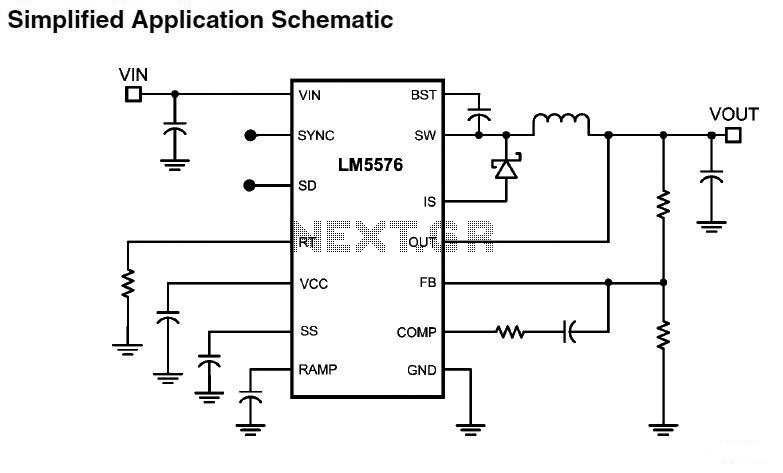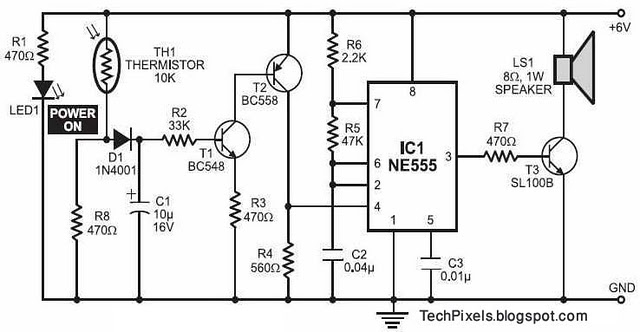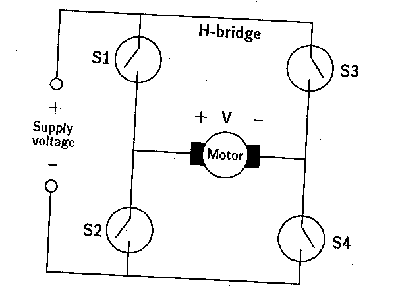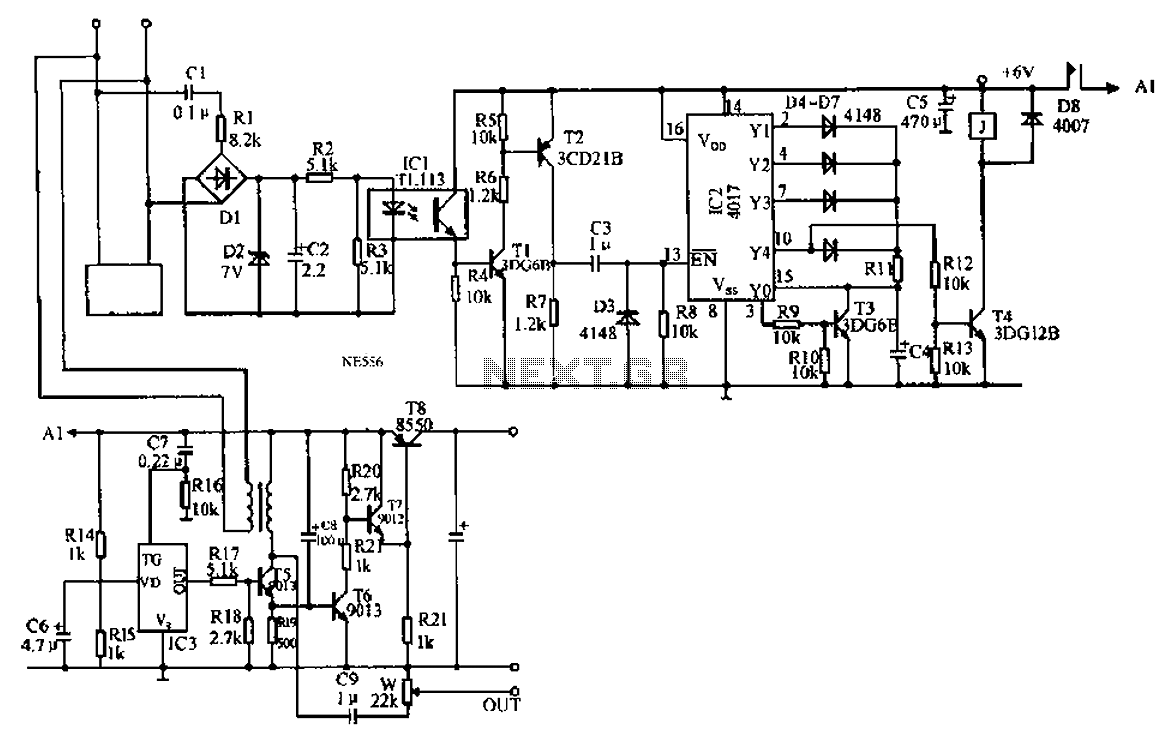
Make this Solar Powered Fence Charger Circuit
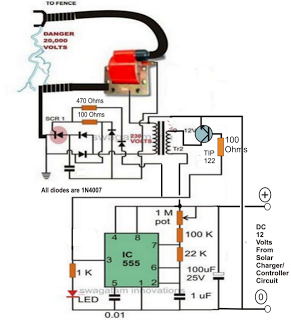
A fence charger or energizer is a device used to electrify a fence or boundary to protect the premises from human or animal intrusions. These boundaries are often located in large fields and parks, typically away from urban areas, making renewable energy sources more suitable than utility grids, which may be difficult to access in remote locations. The circuit of a solar electric fence charger operates independently of traditional power sources by utilizing a self-sustained solar power conversion system. The sudden discharge of high voltage into the primary winding of the ignition coil steps up the voltage to several thousand volts in the secondary winding. The triggering circuit employs an IC 555 oscillator, which switches the voltage from the solar panel controller into the transformer's input, generating the required 220V AC to power the ignition circuit.
The solar electric fence charger operates by converting solar energy into electrical energy, which is then used to energize the fence. The system typically consists of a solar panel, a charge controller, an oscillator circuit, a transformer, and the ignition coil. The solar panel captures sunlight and converts it into direct current (DC) electricity. This DC power is regulated by the charge controller, which ensures that the battery is charged safely and efficiently while preventing overcharging.
The IC 555 oscillator plays a crucial role in the operation of the fence charger. It generates a square wave signal that is used to control the switching of the voltage from the solar panel. This oscillator is configured in astable mode, producing a continuous pulse output that drives the primary winding of the transformer. The transformer steps up the voltage from the low DC level to a high AC voltage, which is necessary for creating the electric shock that deters intruders.
The ignition coil is a vital component in this system. It is designed to handle high voltages and is responsible for producing the high-voltage output required to electrify the fence. When the transformer receives the pulse from the IC 555 oscillator, it induces a high voltage in the secondary winding, which can reach several thousand volts. This high voltage is then delivered to the fence, creating an electric barrier that is effective in keeping unwanted animals and humans away.
Overall, the solar electric fence charger represents an efficient and sustainable solution for securing remote properties. Its reliance on renewable energy sources not only reduces dependence on traditional power grids but also ensures continuous operation, making it an ideal choice for agricultural and rural applications. The integration of solar technology with effective circuitry design allows for a reliable and environmentally friendly method of enhancing security through electrified fencing.A Fence charger or energizer is an equipment which is used for charging(electrifying) a fence or a boundary in order to protect the inside premise from human or animal interventions. Since these boundaries are mostly of large fields and parks, are normally away from the main cities, and powering them through some renewable option becomes more suit
able than from utility grids which may become difficult to acquire in such remote areas. The circuit of a solar electric fence charger explained here does not depend on traditional power source for operating, rather gets it 24/7 from a self sustained solar power conversion set up. The sudden dumping of the above high voltage inside the ignition coils primary, steps up the surge into several thousands of volts into the secondary winding of the ignition coil.
The triggering circuit consists of a IC 555 oscillator which switches the voltage obtained from the solar panel controller into the transformers input, so that the output from the transformer generates the required 220V AC for powering the ignition circuit. 🔗 External reference
The solar electric fence charger operates by converting solar energy into electrical energy, which is then used to energize the fence. The system typically consists of a solar panel, a charge controller, an oscillator circuit, a transformer, and the ignition coil. The solar panel captures sunlight and converts it into direct current (DC) electricity. This DC power is regulated by the charge controller, which ensures that the battery is charged safely and efficiently while preventing overcharging.
The IC 555 oscillator plays a crucial role in the operation of the fence charger. It generates a square wave signal that is used to control the switching of the voltage from the solar panel. This oscillator is configured in astable mode, producing a continuous pulse output that drives the primary winding of the transformer. The transformer steps up the voltage from the low DC level to a high AC voltage, which is necessary for creating the electric shock that deters intruders.
The ignition coil is a vital component in this system. It is designed to handle high voltages and is responsible for producing the high-voltage output required to electrify the fence. When the transformer receives the pulse from the IC 555 oscillator, it induces a high voltage in the secondary winding, which can reach several thousand volts. This high voltage is then delivered to the fence, creating an electric barrier that is effective in keeping unwanted animals and humans away.
Overall, the solar electric fence charger represents an efficient and sustainable solution for securing remote properties. Its reliance on renewable energy sources not only reduces dependence on traditional power grids but also ensures continuous operation, making it an ideal choice for agricultural and rural applications. The integration of solar technology with effective circuitry design allows for a reliable and environmentally friendly method of enhancing security through electrified fencing.A Fence charger or energizer is an equipment which is used for charging(electrifying) a fence or a boundary in order to protect the inside premise from human or animal interventions. Since these boundaries are mostly of large fields and parks, are normally away from the main cities, and powering them through some renewable option becomes more suit
able than from utility grids which may become difficult to acquire in such remote areas. The circuit of a solar electric fence charger explained here does not depend on traditional power source for operating, rather gets it 24/7 from a self sustained solar power conversion set up. The sudden dumping of the above high voltage inside the ignition coils primary, steps up the surge into several thousands of volts into the secondary winding of the ignition coil.
The triggering circuit consists of a IC 555 oscillator which switches the voltage obtained from the solar panel controller into the transformers input, so that the output from the transformer generates the required 220V AC for powering the ignition circuit. 🔗 External reference
